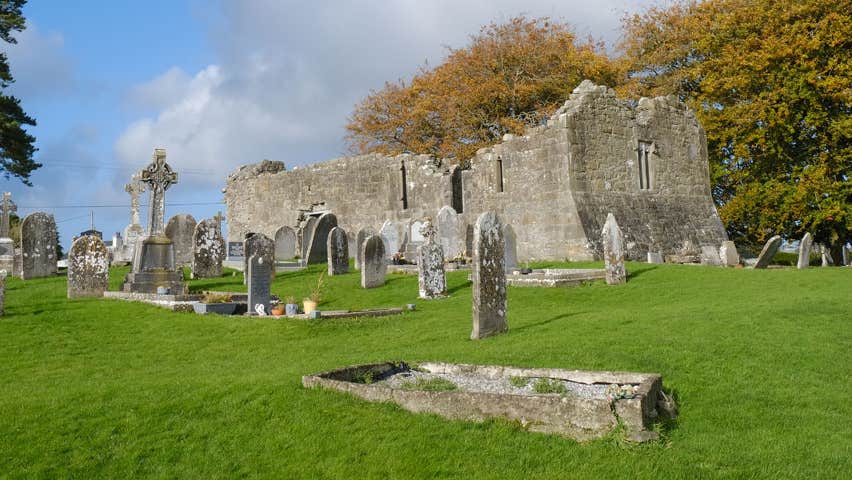In 645, Diarmait, King of Ireland, granted this site to the monks of Clonmacnoise after they prayed successfully for his victory in battle. Not long afterwards, St Manchan, a respected scholar, left Clonmacnoise. Journeying here, he founded a monastery at Tuaim nEirc, an island of dry land surrounded by bogs. Manchan perished in the yellow plague of 664. Since then, this area has been known as Lemanaghan, the grey lands of Managhan.
As the decades passed, the monastery grew in importance. Peat works have uncovered a network of wooden roads, or toghers, that were used by pilgrims and other travellers who crossed the bog to reach this site. The isolated monastery experienced a golden age during the 12th century. These years saw the building of the church with its beautiful Romanesque doorway, as well as the creation of St Manchan's Shrine.
The war torn 13th century took its toll on the church. However, its fortunes revived in the 15th century, when it was patronised by the MacCoghlans, a ruling Gaelic family. For the next 200 years, the church became embroiled in the politics of this family and was sometimes a target of its enemies. During the rebellion of 1641, the church was damaged. By 1682, the church was no longer used as a place of worship. However the holy well and tree continue to be a site of pilgrimage and prayer. The feast day of St Manchan is celebrated on 24th January each year and St Manchan's Shrine is still venerated at the Catholic church in Boher.
The site is open all year and admission is free.
- This peaceful setting is rich in history and good for the soul.
- See the pilgrim path devoted to St Manchan.
- Visit St Manchan's holy well on his feast day of 24th January.
- This site is located on the walking route of the Offaly Way.
Don't forget to stop at St Manchan's holy well which is reputed to cure all kinds of ailments.

